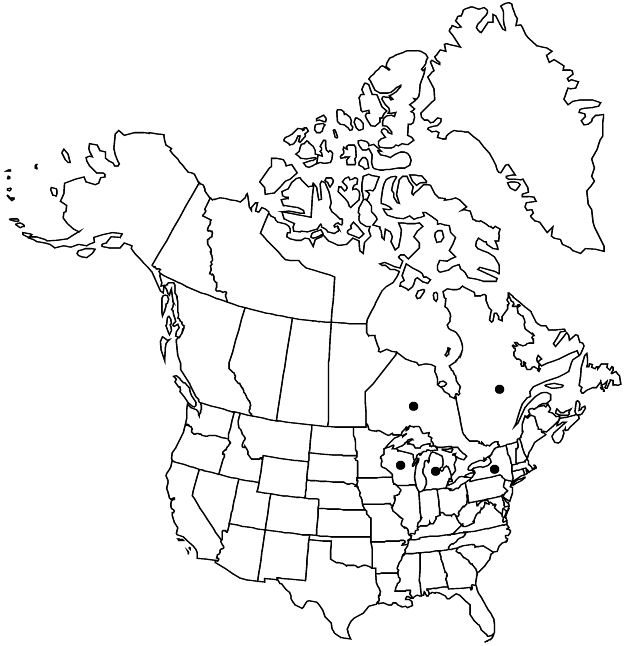Crataegus lumaria
J. Elisha Mitchell Sci. Soc. 19: 25. 1903.
Shrubs or trees, 50 dm. Stems: twigs: new growth often ± reddish young, glabrous, 1-year old gray-brown, older dull gray; thorns on twigs ± recurved, 1-year old shiny, dark brown or black, older gray, slender, 2.5–7 cm. Leaves: petiole length 40–60% blade, glabrous, sparsely to densely minutely glandular; blade green, broadly rhombic to rhombic-ovate, or narrowly ovate to broadly elliptic, 2–4(–5) cm, thin, base rounded to cuneate, lobes 3 or 4 per side, sinuses shallow, lobe apex acute, margins serrate, veins 4–6 per side, apex acute to obtuse, abaxial surface glabrous, adaxial glabrate young, soon glabrescent. Inflorescences 6–15-flowered; branches pilose; bracteoles usually hyaline, linear, membranous, margins of proximal bracteoles usually stipitate-glandular. Flowers 13–18 mm diam.; hypanthium glabrous; sepals narrowly triangular, 5 mm, margins entire, glandular; stamens 10, anthers ivory; styles 2 or 3. Pomes yellowish, dull orange, or reddish, suborbicular, 7–12 mm diam., glabrous; sepals reflexed; pyrenes 2 or 3. 2n = 68.
Phenology: Flowering May; fruiting Sep–Oct.
Habitat: Brush, fallow pastures
Elevation: 30–300 m
Distribution

Ont., Que., Mich., N.Y., Wis.
Discussion
Crataegus lumaria is sporadic through much of its range; it is locally common in southern Ontario.
Crataegus lumaria is much like a hairy-inflorescence form of C. dodgei. The disjunct C. jackii is a form with particularly hairy, suborbiculate leaves and larger flowers (to 20 mm).
Selected References
None.